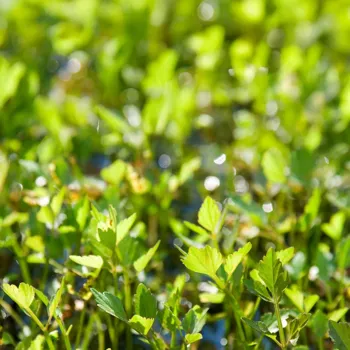Discover the fascinating impact of light on our health and environment. From sleep cycles to plant growth, delve into the science of light for a sustainable future. Read on to unlock the secrets of this
fundamental force
From the warm glow of the morning sun to the cool glimmer of the moon, light is omnipresent, a fundamental aspect of our existence. But have you ever stopped to consider the profound impact light has on our environment and, most importantly, our health?

It's not just about seeing; light orchestrates a symphony of biological processes, influencing everything from plant growth to our sleep cycles. Understanding the science of light is crucial for creating a healthier and more sustainable future for all.
reliance on artificial light impacts modern living
This understanding has practical implications as we become more dependent on artificial light in modern times.
Excessive artificial light disrupts sleep, wildlife, and environment
Modern life exposes us to a lot of artifical light which can affect our sleep cycles. Artificial light at night, especially blue light from electronic devices, can disrupt the production of melatonin, a hormone which is important for regulating sleep.
This disruption can lead to sleep disorders, fatigue, and even long-term health problems. Cities around the world face light pollution, where excessive and misdirected artificial light obscures the stars and disrupts nocturnal wildlife.
Think about the fireflies whose mating rituals depend on the darkness and which is increasingly threatened by human lights. Light pollution consumes a lot of energy and contributes to greenhouse gas emissions.
Solutions like shielding light fixtures, using amber-toned lights which emits less blue light, and diming lights during off-peak hours can help reduce light pollution and promote energy conservation.
Light's vital role in plant growth via photosynthesis for energy and flowering
Light plays a crucial role in the development of plant life through the marvel of science of photosynthesis. Plants uses light energy to convert carbon dioxide and water into glucose, a sugar that provides energy for their growth and survival.

Different wavelengths of light affect photosynthesis at different rates, with red and blue light being the most effective. Farmers can use this knowledge to optimize plant growth in greenhouses by using special lights with specific wavelengths to create optimal yield.
Light also influences the flowering time of plants with some plants flowering in long days (summer) and others in short days(winter). As you can see, the magic of light makes our world greener, providing us food and air to breathe.
Our bodies rely on light to sync circadian rhythm for health
Our bodies have an internal clock, or circadian rhythm, which regulates our sleep-wake cycle, hormone production, and other important physiological processes. Light is the main factor that synchronizes this circadian rhythm with the environment.
When light enters our eyes, it sends signals to the brain which suppress the production of melatonin, making us feel awake and alert. Exposure to light during the day helps strengthen our circadian rhythm, making it easier to fall asleep and wake up at regular times.
Lack of exposure to natural light can disrupt our circadian rhythm; it can lead to various problems such as seasonal affective disorder(SAD), which is a type of depression that occurs during the winter months when there's less sunlight.
Visible light is just a fraction of the spectrum; invisible light has medical potential
The colour we see is just a small part of the spectrum, known as visible light. There are other useful parts too which we cannot see. Doctors uses Ultraviolet (UV) to treat skin conditions like psoriasis, a condition which causes skin inflammation.

Infrared light can penetrate tissues, providing pain relief and promoting healing. Scientists are investigating the ability to use light-based therapies to treat other medical conditions, such as cancer and Alzheimer's disease with promising results; it shows the magic of light can promote life.
The potential applications of light in medicine are vast, offering new avenues for treating diseases and improving human health. The usage of such treatments is safe and affordable for Indian citizens and can be used widely in cities and rural areas.
Light promotes sustainability; solar power reduces carbon emissions in India
Beyond just the health of plants, light can be used, and has been used, to promote the general sustainability. Solar panels convert the sun's light into electricity, it provides a clean and renewable energy source that can reduce our dependence on fossil fuels.
Solar power is becoming increasingly affordable and accessible in India, helping to meet the growing energy demands while reducing carbon emissions.
Smart lighting systems can adjust the brightness of lights based on the presence of occupants in the room, and they can adjust the colour temperature to mimic natural daylight.
This not only saves energy by not using much electricity but also improves occupants' well-being by creating a comfortable visual environment.
The Indian government must bring about better infrastructure for promoting the benefits of solar panel for the country, whether in metropolitan cities or rural.
Harnessing light for a sustainable future through awareness and education
Light affects us and our planets deeply; it does more than provide visibility. Understanding the science of light helps us make better choices, from designing buildings that maximize natural light to adopting lighting technologies that promotes sustainability.

By harnessing the power of light responsibly, we can improve our health, protect our planet, and create a brighter future for everyone. Awareness should be created through school level, camps, rallies or by digital means on the power of light.
By creating awareness to all citizens, we can create a better future for people around the world.
AI Generated Content. Glance/InMobi shall have no liability for the content














